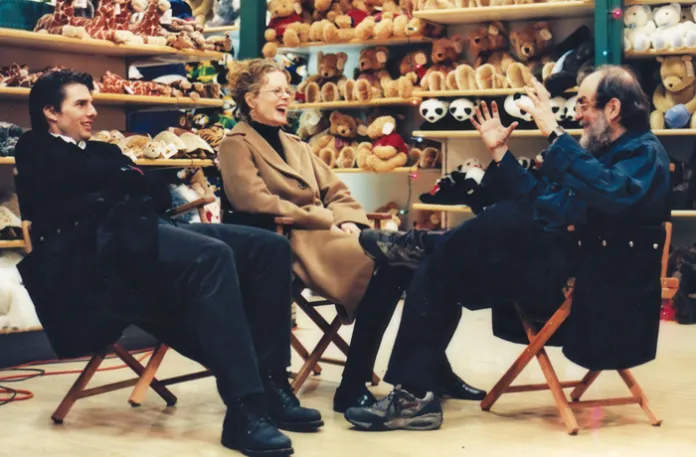The films of Stanley Kubrick have been endlessly dissected, yet a curious connection to Gustave Flaubert’s advice – “be regular and orderly in your life, so that you may be violent and original in your work” – has remained largely unexplored. No artist of the 20th century embodied this principle more completely than Kubrick, a master of unsettling vision born from a meticulously structured existence.
Kubrick actively dismissed rumors of his reclusive nature, but a kernel of truth resided within those perceptions. Though born in New York in 1928, he found a lasting home in England, refusing to relocate even when his stories demanded settings far removed from his adopted country. His personal life, marked by three marriages, was most notably defined by a remarkably enduring union with Christiane Harlan, lasting from 1958 until his death in 1999. Together, they raised three daughters and shared a life often accompanied by a multitude of dogs.
It wouldn’t be accurate to label Kubrick a hermit, but he clearly valued a calm, “regular and orderly” domestic life. Perhaps, like Flaubert, he understood that this tranquility was the very engine powering the disturbing, brilliant visions that unfolded on screen in films like *Dr. Strangelove* and *2001: A Space Odyssey*. These works continue to resonate with their unflinching portrayals of madness, human folly, and existential terror.

His final film, *Eyes Wide Shut*, released in 1999, marked a singular moment in Kubrick’s career – a direct, and deeply personal, exploration of the fragility of domestic life. Recently restored in stunning 4K UHD and Blu-ray, the film stands as his most self-revealing work, despite being his most modestly scaled since *Lolita*.
Upon its release, *Eyes Wide Shut* became a cultural phenomenon, fueled in part by the circumstances of Kubrick’s death just months prior. The media seized upon the film, with Entertainment Tonight providing ongoing coverage, The Today Show debuting footage, and Time magazine featuring Tom Cruise and Nicole Kidman on its cover. Even Roger Ebert dedicated an entire episode of his review show to the film, while Chris Isaak discussed Kubrick’s use of his music on late-night television.
Beyond the media frenzy, *Eyes Wide Shut* resonated as a strikingly autobiographical work. Kubrick reimagined Arthur Schnitzler’s *Traumnovelle*, casting Cruise as Bill Harford, a New York physician whose comfortable life is subtly disrupted. Bill’s wife, Alice (Kidman), a former art dealer now devoted to motherhood, reveals a past fantasy that throws his world into disarray. Their luxurious apartment, filled with art created by the real Mrs. Kubrick, serves as a backdrop to this unraveling.
Bill, like Kubrick himself, cherishes his family life, but Alice’s confession ignites a crisis of confidence. She admits to a fleeting attraction to another man, a revelation that lingers as a potent psychological weapon. Kidman’s performance captures a character haunted by a momentary desire, a memory that holds unexpected power. The film’s dreamlike quality amplifies this sense of unease, blurring the lines between reality and the characters’ internal worlds.
Consumed by Alice’s revelation, Bill embarks on a journey into the city’s underbelly, a departure from his carefully constructed life. He encounters a prostitute, a woman professing inexplicable love, and ultimately finds himself drawn into a clandestine masked orgy. However, *Eyes Wide Shut* isn’t about Bill abandoning his principles. His encounters are unsettling, even repulsive, and he’s plagued by anxiety when he suspects his actions have had dire consequences.
The film ultimately functions as a quiet defense of the “regular and orderly” life. Kubrick suggests that no good comes from dwelling on unrealized fantasies or indulging in reckless behavior. The narrative arc isn’t about self-discovery, but about a return to established roles – husband, wife, father, and mother – a reaffirmation of commitment and stability.
Kubrick concludes the story in a toy store, a deliberate choice that underscores the film’s underlying morality, despite its mature themes. As Bill and Alice reaffirm their vows while their daughter searches for Christmas gifts, we sense Kubrick’s own justification for his private, protected family life. It’s a reassuring ending, a testament to the wisdom of honoring commitments and finding solace within the bonds of marriage.
This new Criterion edition offers a deeper understanding of Kubrick’s final masterpiece, featuring interviews with key crew members, including cameraman Larry Smith and set decorator Lisa Leone. The meticulous restoration faithfully recreates the tactile textures of the original 35mm prints, highlighting Kubrick’s deliberate visual scheme – a careful use of color and composition that reflects his profound investment in the story. Ultimately, *Eyes Wide Shut* delivers a simple, powerful message: cherish your spouse, and resist the temptation to seek answers where they may be best left undisturbed.





